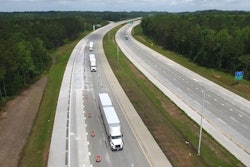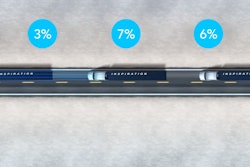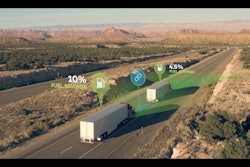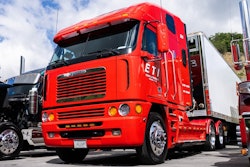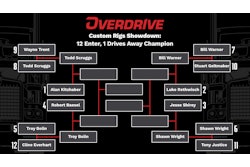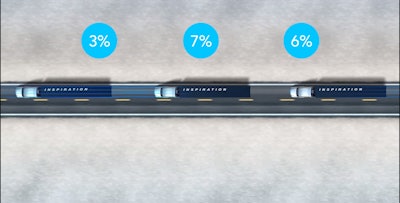 A graphic distributed in 2015 by Freightliner on the fuel economy benefits of a three-truck platoon.
A graphic distributed in 2015 by Freightliner on the fuel economy benefits of a three-truck platoon.Two-truck platooning is not only a viable technology for the U.S. trucking industry, but it also has the potential to reduce carriers’ fuel consumption, according to a new Confidence Report released Wednesday by the North American Council for Freight Efficiency.
In a two-truck platoon, the potential fuel consumption savings versus an isolated single vehicle varies depending on the separation distance of the trucks, but the report says at a following distance of 40- to 50-feet platooning can lead to 4 percent average savings over the two trucks after accounting for traffic, terrain and time when equipped trucks will not be operating in a platoon.
“We see platooning being the next logical automation,” says Mike Roeth, executive director of NACFE. Roeth emphasized that while platooning uses select autonomous technologies, it’s being unfairly and incorrectly labeled as driverless tech. “Why are we even looking at autonomous trucks when we don’t even link up two 53 foot trailers?”
Platooning is the race car equivalent of drafting. In a platoon, once the trucks have moved into close following distances, all of the engaged vehicles receive a fuel economy boost thanks to increased aerodynamic efficiencies. The lead vehicle would dictate speed for the platoon, while the trail vehicle maintained a pre-determined speed.
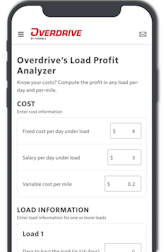
The lead vehicle will bear the brunt of the aerodynamic load and will typically see marginal fuel economy boost. Trailing trucks in a platoon, which operate in a low air pressure aerodynamic “sweet spot,” can see significant increases in fuel economy performance at highway speeds.
Roeth says confidence level among fleet managers that platooning technology, as well as the concept of platooning and the projected fuel economy gains it can yield, is high across the board.
However, he adds there is a lag in the confidence that platooning can work in the “real world,” most notably in heavy traffic or mountainous terrain.
“There will be early adoptions, including large mega fleets that operate within close proximity to each other,” he says, “as well as some small fleets that might have trucks in dedicated routes that could pair up.”
